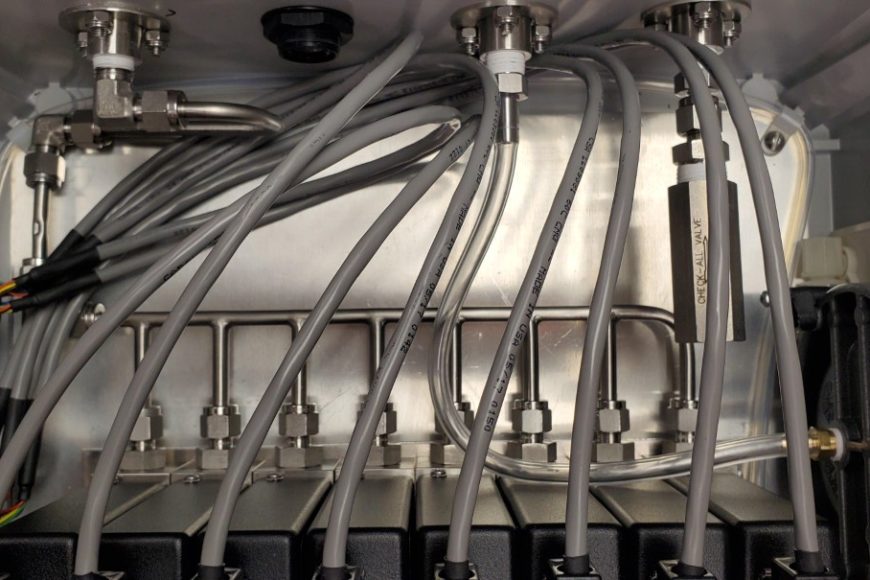
To carry out accurate trace gas analysis, it’s essential that trace level gas calibration is carried out regularly and with precisely prepared calibration gas mixtures. In this blog post, we explore the basics of trace gas analysis and take a closer look at why trace level gas calibration is so important.
Trace level gas analyzers (or trace gas analyzers) are systems that detect and quantify extremely low concentrations of certain compounds in gas mixtures. Often capable of measuring concentrations of target gases down to parts-per-billion (ppb) levels, they find use in a wide range of industrial and research applications.
In industry, trace gas analyzers play an important part in process control. For example, in the industrial production of urea, in-line trace gas analyzers may be used to monitor concentrations of hydrogen which, left unchecked, can pose an explosive hazard. Other applications include monitoring beverage gases for impurities or detecting airborne impurities in semiconductor cleanroom applications.1
Trace gas analyzers are also essential equipment in laboratory and field research. In particular, portable trace gas analyzers are commonly used for atmospheric analysis, where they’re typically used to detect CO2, N2O, and CH4.
Due to being developed for a huge number of applications, trace level gas analyzers are available in many different forms and configurations: from benchtop laboratory models capable of measuring single target gases with extreme precision to ruggedized models designed for multi-gas analysis in rainforest environments. A variety of different sensor types can be used for trace gas analysis, with spectroscopic approaches being the most common.
The Importance of Trace Level Gas Calibration
Despite the high precision of trace gas analyzers on the market today, it’s important to note that the accuracy of any sensor is limited by the accuracy with which it was calibrated. In addition, since trace gas analyzers are prone to “drift” over time, routine trace level gas calibration must be carried out to ensure the accuracy of measurements.
Trace level gas calibration involves the exposure of a trace gas analyzer to a calibration standard – i.e., a preparation of gas with a known concentration of the target gas. For example, carrying out trace level gas calibration for a CO2 analyzer would involve exposing it to a gaseous mixture containing a well-known concentration of CO2.
Trace level gas calibration provides a reference point for trace gas analyzers to compare future measurements to. Trace gas analyzers are susceptible to drift in response to variations in ambient pressure or temperature – this means that high precision can only be attained with careful calibration procedures, often involving multiple setpoints to account for these variations in sensor behavior.2,3
Since modern trace gas analyzers are required to make measurements at ever-increasing levels of precision, the level of accuracy with which the trace level gas calibration standard is prepared is of paramount importance. Any uncertainty in the concentration of target gases in a calibration gas mixture limits the accuracy of trace level gas calibration, in turn limiting the accuracy of measurements made by the analyzer.
Environics gas mixers produce ultra-precise gas calibration standards suitable for even the most exacting trace level gas calibration applications. Using precise control of thermal mass flow controllers, our series 4000 gas mixing system offers accuracy better than 1% and repeatability of 0.05% of setpoint, generating concentrations from ppb to percent levels for single or multi-point trace level gas calibration.
With over 35 years of expertise in developing gas mixing systems, Environics provides a full range of off-the-shelf gas mixing systems to suit any trace level gas calibration requirements. We also specialize in developing custom systems for all other specialist gas mixing applications. To find out more about our gas mixing systems, including solutions for trace level gas calibration, get in touch with a member of the Environics team today.

